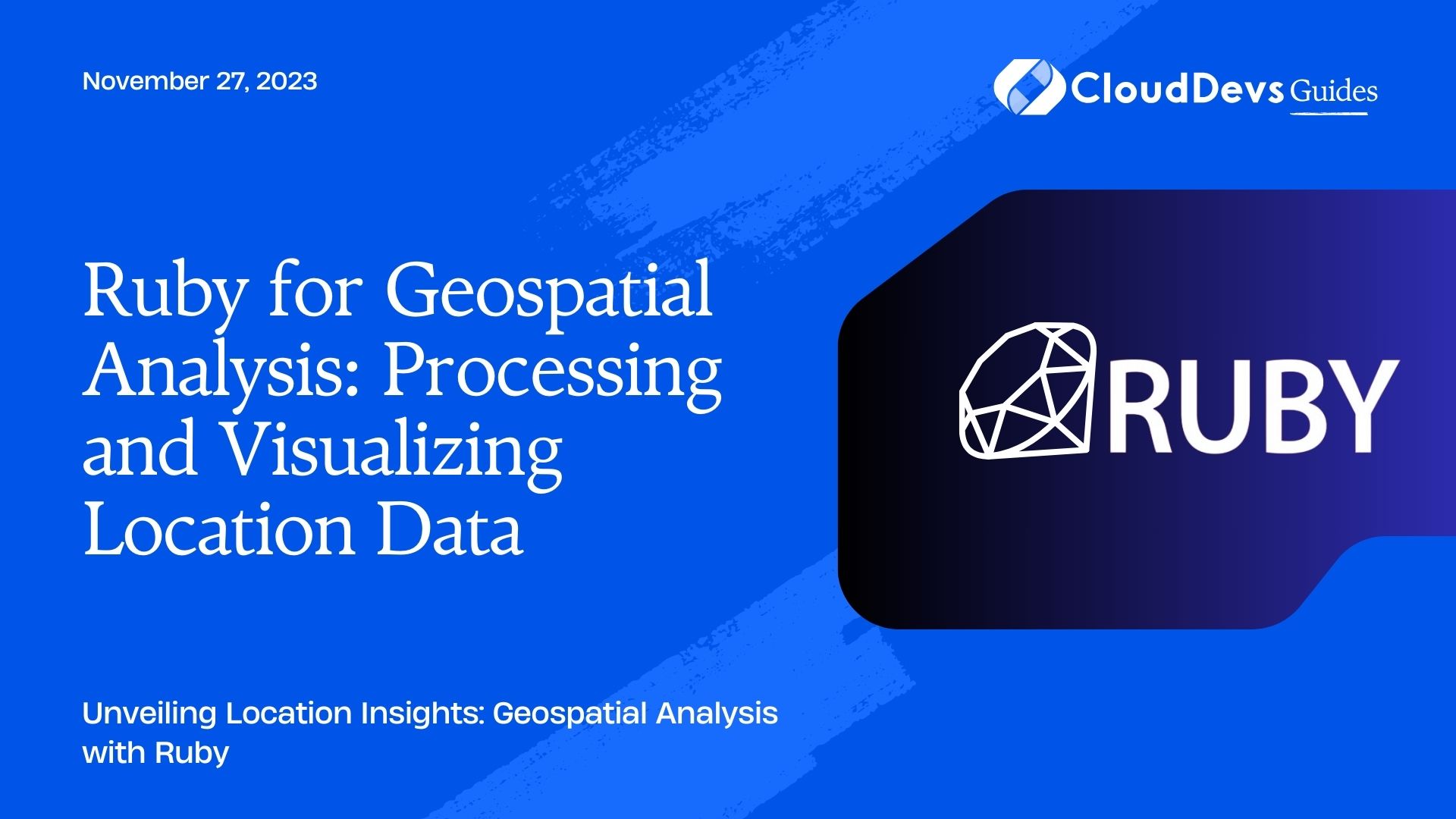Ruby for Geospatial Analysis: Processing and Visualizing Location Data
In the era of data-driven decision-making, location-based information has become a crucial asset for various industries, from logistics and urban planning to marketing and environmental studies. Geospatial analysis involves processing and analyzing data with a geographic component, providing insights that can drive informed choices. While Python and R are often the go-to languages for geospatial analysis, Ruby, a versatile and elegant programming language, is gaining traction for its capabilities in handling location data. In this article, we’ll delve into the world of geospatial analysis using Ruby, exploring how to process and visualize location data effectively.
Table of Contents
1. Why Choose Ruby for Geospatial Analysis?
Ruby, renowned for its simplicity and readability, might not be the first language that comes to mind for geospatial analysis. However, its robust ecosystem of libraries and gems makes it more than capable of handling location-based data effectively. Additionally, if you’re already familiar with Ruby, leveraging it for geospatial tasks can save time and effort in learning a new language.
2. Setting Up Your Environment
Before we dive into the practical aspects, let’s ensure you have the necessary tools installed. First, make sure you have Ruby installed on your system. You can verify this by opening a terminal and running:
bash ruby -v
If Ruby is not installed, you can download and install it from the official website.
Next, let’s set up a project directory for our geospatial analysis. Create a new folder and navigate to it in the terminal:
bash mkdir geospatial-analysis-ruby cd geospatial-analysis-ruby
3. Working with Geospatial Data Formats
Geospatial data often comes in various formats, such as GeoJSON, Shapefiles, and GPX. Ruby offers several libraries that allow you to read, manipulate, and analyze these formats. One popular choice is the ‘rgeo’ gem, which provides support for geospatial data types and operations. To install the gem, add it to your Gemfile or run:
bash gem install rgeo
Now, let’s consider a scenario where you have a GeoJSON file containing information about different points of interest in a city. You can read and process this file using ‘rgeo’:
ruby require 'rgeo/geo_json' file_path = 'city_points.geojson' geojson_text = File.read(file_path)
feature_collection = RGeo::GeoJSON.decode(geojson_text, json_parser: :json)
In this code snippet, we’re using the ‘rgeo’ library to read the GeoJSON file, decode its contents, and store them as a feature collection.
4. Calculating Distances and Areas
Geospatial analysis often involves calculating distances between points or areas of polygons. Ruby can handle these computations efficiently with the help of gems like ‘geocoder’ and ‘rgeo-geojson’. Let’s see how to calculate the distance between two coordinates using the ‘geocoder’ gem:
bash gem install geocoder
Now, in your Ruby script:
ruby
require 'geocoder'
point1 = Geocoder.coordinates('40.7128, -74.0060')
point2 = Geocoder.coordinates('34.0522, -118.2437')
distance = Geocoder::Calculations.distance_between(point1, point2)
puts "Distance between points: #{distance} kilometers"
This code snippet uses the ‘geocoder’ gem to convert coordinate strings into points and calculates the distance between them.
5. Visualizing Geospatial Data
Visualizing geospatial data is essential for gaining insights and communicating results effectively. Ruby provides options for creating maps and visualizations. One popular library is ‘folium-rb’, which is inspired by Python’s ‘folium’ library.
To start, install the ‘folium-rb’ gem:
bash gem install folium-rb
Here’s an example of how to use ‘folium-rb’ to create a simple map with markers:
ruby
require 'folium'
map = Folium::Map.new(location: [latitude, longitude], zoom_start: 12)
marker = Folium::Marker.new(location: [latitude, longitude], popup: 'Marker Popup')
marker.add_to(map)
map.save('map.html')
Replace latitude and longitude with the actual coordinates. This code creates an HTML file containing an interactive map with a marker.
6. Spatial Analysis and Queries
Ruby allows you to perform spatial analysis and queries on geospatial data using libraries like ‘rgeo-activerecord’. This gem integrates spatial capabilities into ActiveRecord, Ruby’s Object-Relational Mapping (ORM) library.
Suppose you have a dataset of restaurants with location information and want to find restaurants within a certain radius of a specific point:
ruby require 'rgeo/active_record' class Restaurant < ActiveRecord::Base set_rgeo_factory_for_column(:location, RGeo::Geographic.spherical_factory) end user_location = RGeo::Geographic.spherical_factory.point(user_latitude, user_longitude) nearby_restaurants = Restaurant.within(user_location, radius)
In this example, ‘rgeo-activerecord’ allows you to perform a spatial query to find restaurants within the specified radius of the user’s location.
Conclusion
Ruby’s versatility extends to the realm of geospatial analysis, making it a viable choice for processing and visualizing location data. With libraries like ‘rgeo’ for data manipulation, ‘geocoder’ for distance calculations, ‘folium-rb’ for map visualization, and ‘rgeo-activerecord’ for spatial queries, Ruby equips developers with the tools needed to harness the power of location-based insights. Whether you’re working on a logistics optimization project or studying urban growth patterns, Ruby’s elegant syntax and supportive ecosystem can streamline your geospatial analysis workflows.
As you embark on your geospatial analysis journey with Ruby, remember that practice and experimentation are key. By combining your Ruby skills with geospatial concepts, you can unlock valuable insights from location data and contribute to smarter decision-making in various domains.
So, go ahead and explore the fusion of Ruby and geospatial analysis – a partnership that holds immense potential for creating impactful solutions in our spatially aware world
Table of Contents








